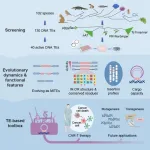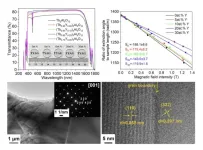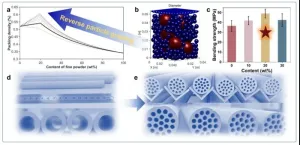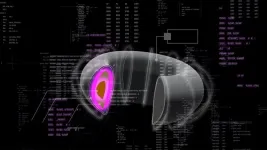(Press-News.org) One in six patients in primary care reported cannabis use, with 35% of those using at levels indicating moderate- to high-risk for cannabis use disorder, new UCLA research finds.
The findings, to be published June 5 in JAMA Network Open, suggest that most patients reported using cannabis for symptom management, despite identifying as recreational users, indicating the need for routine cannabis screening. Currently few healthcare systems offer this screening in primary care settings.
“Patients may not tell their primary care providers about their cannabis use, and their doctors may not ask about it,” said lead author Dr. Lillian Gelberg, professor of family medicine at the David Geffen School of Medicine at UCLA and of health policy and management at the UCLA Fielding School of Public Health “Not asking patients about their cannabis use results in a missed opportunity for opening up doctor-patient communication regarding use of cannabis generally and for management of their symptoms. “
Thirty-eight states, three US territories and the District of Columbia allow cannabis for medical use, and 24 of these states also permit recreational use. Stigma over cannabis use has fallen likely due to these legal moves. While there has been an increased perception that its use is risk free, cannabis potency has increased.
The U.S. Preventive Services Task Force recommended in 2020 that primary care physicians screen their adult patients for use of cannabis and other substances. The following year the investigators implemented the UCLA universal electronic health record-based, self-administered survey on cannabis use and medical cannabis use. Patients complete this survey as pre-visit screening prior to their primary care visits as sent to them via the Epic patient portal.
The researchers used patients’ de-identified electronic health records at UCLA collected from January 2021 to May 2023 to determine the prevalence, correlates and reasons for current cannabis use. The UCLA Health system is one of the few to ask patients to voluntarily complete cannabis use surveys during pre-appointment check-ins. The survey used the WHO Alcohol Substance Involvement Screening Test (ASSIST) to assess cannabis use.
Nearly 176,000 patients completed surveys. Of those, nearly 30,000 (17%) reported cannabis use among whom 35% had results suggesting moderate- to high-risk for a cannabis use disorder, defined as a score of 8 or higher on the screening survey. Among users, 40% used cannabis once or twice in the previous three months, 17% used monthly, 25% used weekly and 19% used it daily or almost daily.
Other findings included:
Cannabis use was lowest among people living in the most disadvantaged neighborhoods (14%), yet the risk for disordered use was highest among this group
Inhaled modes of cannabis use were as common as ingestion (65.0% and 64.7%), including 29% who vaped
47% used cannabis for medical reasons
76% used it to manage symptoms such as mental health symptoms or stress (56%), sleep (56%), and pain (37%). Further, most patients who reported using cannabis only for recreational reasons had also used it at some point to manage a symptom.
The study has some limitations. The findings are based on patients’ self-reported use and though cannabis is legal in California, some patients may still have been reluctant to disclose using it. Much of the data were from screenings taken during the COVID-19 lockdown, during which cannabis use may have been higher than it might have been otherwise. In addition, the findings may not be applicable to other health systems, particularly in states where cannabis use is still illegal.
However, “given the high rates of cannabis use and medical cannabis use that we found in this large urban healthcare system, it is essential that healthcare systems implement routine screening of all primary care patients,” the researchers write. “Integrating screening efforts to include information regarding cannabis use for symptom management could help enhance the identification and documentation of medical cannabis usage, particularly in the healthcare context.”
Study co-authors are Dana Beck, PhD, MSN; Julia Koerber, MPH; Whitney N. Akabike, PMP, MSPH; Lawrence Dardick, MD; Clara Lin, MD; Steve Shoptaw, PhD; and Marjan Javanbakht, MPH, PhD.
The study was funded by the University of California Tobacco-Related Disease Research Program (grant #T29IR0277) and the National Institutes of Health National Center for Advancing Translational Science (NCATS) UCLA CTSI (grant #UL1TR001881).
Article: [citation] doi:10.1001/jamanetworkopen.2024.14809
END
Cannabis use common among patients, with most using it to manage a symptom or health condition
2024-06-05
ELSE PRESS RELEASES FROM THIS DATE:
Large-scale study reveals functional diversity of DNA transposons and expands genome engineering toolbox
2024-06-05
In a study published in Cell, a research team led by ZHANG Yong'e and WANG Haoyi from the Institute of Zoology of the Chinese Academy of Sciences has characterized the diversity of DNA transposons and expanded the genome engineering toolbox.
"Our systematic and comparative framework complements conventional case studies in elucidating basic biology and strengthening applied biology," said Prof. ZHANG, corresponding author of the study.
Since the first discovery of transposons by Barbara McClintock in the 1940s, scientists ...
Preoperative antibiotic treatment in pediatric elbow fracture surgery is not necessary
2024-06-05
Antibiotic treatment prior to surgical repair of a pediatric elbow fracture does not reduce the risk for post-operative infection, according to new findings from a team of researchers and surgeons from the University of Missouri School of Medicine.
A humerus bone fracture near the elbow is a common injury among children who fall. The typical surgical approach for repairing pediatric elbow fractures is a procedure called closed reduction percutaneous pinning (CRPP). It involves inserting pins or wires through the skin to promote stability and healing of the bone. CRPP is a minimally invasive, safe and effective ...
Experts alert doctors and the public to the arrival of hard-to-treat fungal skin infections in the United States
2024-06-05
Healthcare providers should watch out for new and highly contagious forms of ringworm or jock itch, which are emerging as a potential public health threat, according to a pair of reports.
In the first of the studies, experts at NYU Langone Health who focus on the spread of contagious rashes document the first reported U.S. case of a sexually transmitted fungal infection that can take months to clear up even with treatment. In the second report, NYU Langone physicians partnered with authorities at the New York State ...
Effect of Y substitution on the microstructure, magneto-optical, and thermal properties of (Tb1-xYx)3Al5O12 transparent ceramics
2024-06-05
A team of material scientists led by Jiang Li from Shanghai Institute of Ceramics, Chinese Academy of Sciences, in Shanghai, China recently reported (Tb1-xYx)3Al5O12 magneto-optical ceramics with high optical quality. The optical transmittance, microstructure, Verdet constant, and thermal conductivity of (Tb1-xYx)3Al5O12 with different Y content were investigated in detail. It was found that Y2O3 can suppress the secondary phase and improve the optical quality of TAG ceramics. As optical quality occupies one ...
A reverse particle grading strategy for design and fabrication of porous SiC ceramic supports with improved strength
2024-06-05
Since the brittle characteristics of porous ceramics, high mechanical strength is the most important prerequisite among the fundamental requirements especially when used as the supports. Particle grading strategy has been intensively extended in the preparation of porous ceramics to improve the mechanical strength. Unfortunately, this usually accompanies with the notable sacrifice in porosity. The trade-off between the mechanical strength and porosity is well recognized in the field of porous ceramics, and attempts have been increasingly devoted to overcome the issue.
Recently, a research team ...
Great news, parents: You do have power over your tweens’ screen use
2024-06-05
Restricting use in bedrooms and at mealtimes have the biggest impact, but modeling good behavior is also important.
For many parents, it can feel like curbing kids’ screen use is a losing battle. But new research from UC San Francisco (UCSF) has found the parenting practices that work best to curb screen time and addictive screen behavior: restricting screens in bedrooms and at mealtimes and modeling healthy practices at home.
Researchers asked 12- to 13-year-olds how often they used screens for everything but school, including gaming, texting, social media, video chatting, watching videos and browsing the internet; and whether their ...
Breakthrough in battery technology: iron-chromium redox flow batteries enhanced with N-B doped electrodes
2024-06-05
Researchers at the State Key Laboratory of Heavy Oil Processing, China University of Petroleum Beijing, have achieved a significant advancement in battery technology that could revolutionize how energy is stored and utilized, particularly for large-scale applications. In a recently published article in the journal Green Energy and Intelligent Transportation, the team, led by Yingchun Niu and Senwei Zeng, introduced a novel N-B doped composite electrode for iron-chromium redox flow batteries (ICRFB), demonstrating outstanding improvements in performance and efficiency.
Iron-chromium redox flow batteries are pivotal in addressing the ...
AI approach elevates plasma performance and stability across fusion devices
2024-06-05
Achieving a sustained fusion reaction is a delicate balancing act, requiring a sea of moving parts to come together to maintain a high-performing plasma: one that is dense enough, hot enough, and confined for long enough for fusion to take place.
Yet as researchers push the limits of plasma performance, they have encountered new challenges for keeping plasmas under control, including one that involves bursts of energy escaping from the edge of a super-hot plasma. These edge bursts negatively impact overall performance and even damage the plasma-facing ...
Tiny crop-health sensors could help cut the cost of groceries
2024-06-05
A compact, lightweight sensor system with infrared imaging capabilities developed by an international team of engineers could be easily fitted to a drone for remote crop monitoring.
This flat-optics technology has the potential to replace traditional optical lens applications for environmental sensing in a range of industries.
This innovation could result in cheaper groceries as farmers would be able to pinpoint which crops require irrigation, fertilisation and pest control, instead of taking a one-size-fits-all approach, thereby potentially boosting their harvests.
The sensor system can rapidly switch between edge ...
Uptake of tire wear additives by vegetables grown for human consumption
2024-06-05
Car tires contain hundreds of chemical additives that can leach out of them. This is how they end up in crops and subsequently in the food chain. Researchers at the Center for Microbiology and Environmental Systems Science at the University of Vienna and the Hebrew University of Jerusalem have now detected these chemical residues in leafy vegetables for the first time. Although the concentrations were low, the evidence was clear, a finding that is also known for drug residues in plant-based foods. The study was published in the internationally renowned journal Frontiers in Environmental Science.
The presence of drug residues in commercially sold fruit ...






